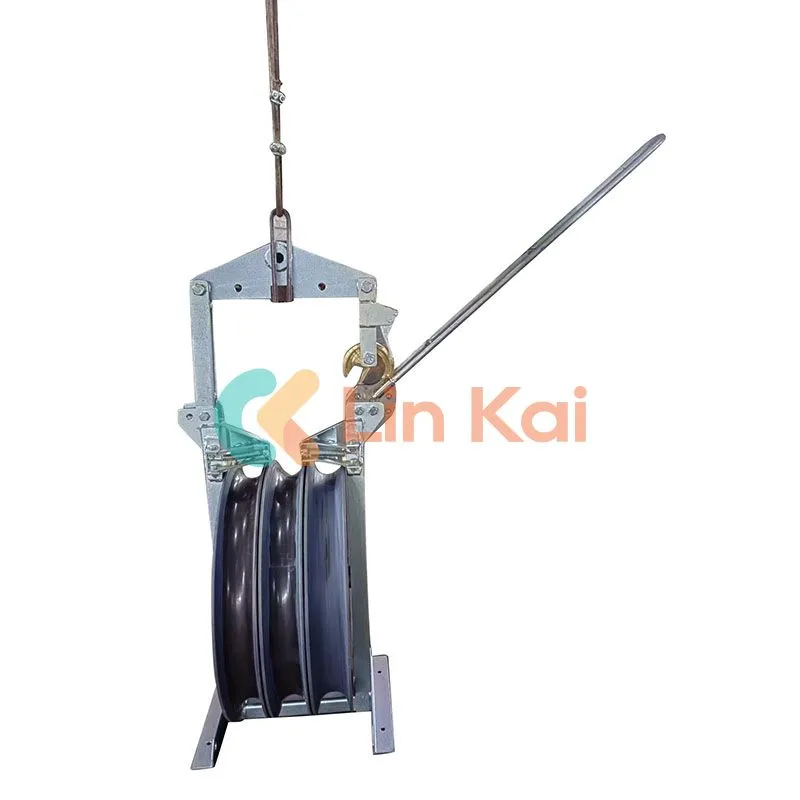Why is stringing blocks important in construction?
2024-10-18
Stringing blocks play a vital role in various construction applications, particularly in projects involving the installation of cables, wires, or ropes over long distances. Their importance can be attributed to several key factors:
1. Guiding Cables and Wires
- Precise Direction: Stringing blocks provide a controlled path for cables and wires, ensuring they follow the intended route without tangling or misalignment.
- Reduced Friction: The design of stringing blocks minimizes friction between the cable and the block, allowing for smoother movement and easier installation.

2. Supporting Heavy Loads
- Load Distribution: Stringing blocks are designed to handle significant weights, distributing the load evenly across multiple points. This prevents damage to cables and reduces the risk of failure during installation.
- Safety: Using appropriate stringing blocks ensures that heavy cables are safely managed, minimizing the risk of accidents or injuries on the job site.
3. Enhancing Efficiency
- Streamlined Processes: By providing a systematic approach to cable installation, stringing blocks help speed up the process, allowing workers to focus on other aspects of the construction project.
- Reduced Labor: The use of stringing blocks can decrease the number of personnel required for installations, as they facilitate easier handling and positioning of cables.
4. Improved Alignment and Tension Control
- Alignment Assurance: Stringing blocks help maintain proper alignment during installation, which is crucial for ensuring that cables function correctly in their intended applications.
- Tension Monitoring: Many modern stringing blocks come equipped with tension monitoring systems that provide real-time feedback, allowing workers to adjust tension levels as needed to prevent overstressing the cables.
5. Versatility Across Applications
- Multiple Uses: Stringing blocks can be utilized in various applications, from electrical and telecommunications installations to construction projects that require lifting and guiding materials.
- Adaptability: They can be adapted for different cable types and sizes, making them a versatile tool for construction teams.
6. Enhancing Safety Measures
- Preventing Cable Damage: By guiding cables and wires safely and efficiently, stringing blocks help prevent wear and tear, which could lead to electrical faults or failures.
- Reducing Risk of Injury: Properly used stringing blocks help minimize the risk of accidents associated with handling heavy cables, contributing to a safer work environment.
7. Cost-Effectiveness
- Long-Term Savings: While there may be an initial investment in high-quality stringing blocks, their use can lead to significant cost savings by reducing labor time, minimizing cable damage, and preventing accidents that could lead to costly repairs or downtime.
Conclusion
Stringing blocks are essential tools in construction and installation projects that involve the handling of cables, wires, or ropes. Their ability to provide guidance, support, and efficiency while enhancing safety makes them invaluable in achieving successful outcomes in various applications. By facilitating precise cable management and minimizing the risks associated with heavy loads, stringing blocks play a critical role in the overall success of construction projects.


